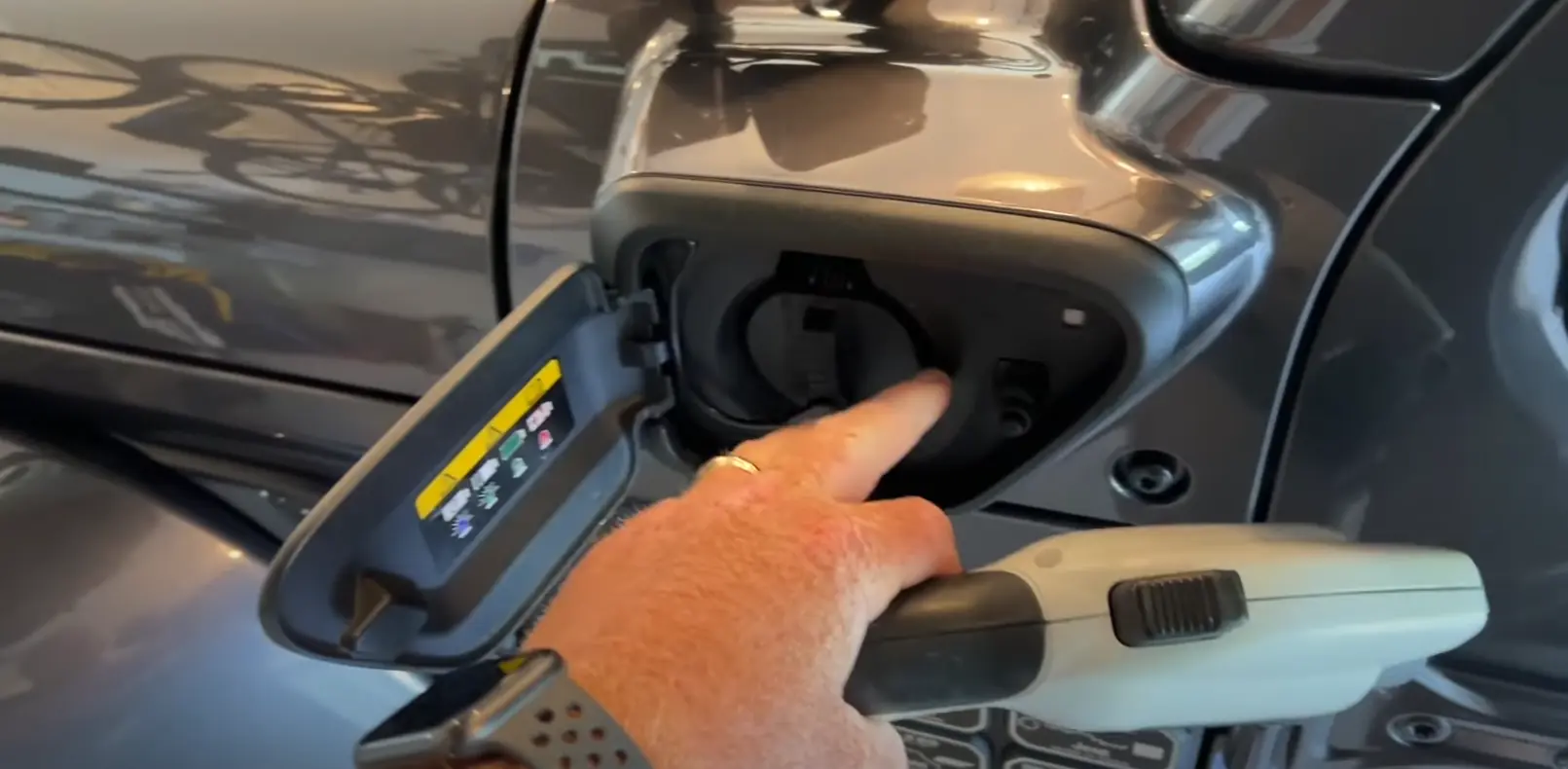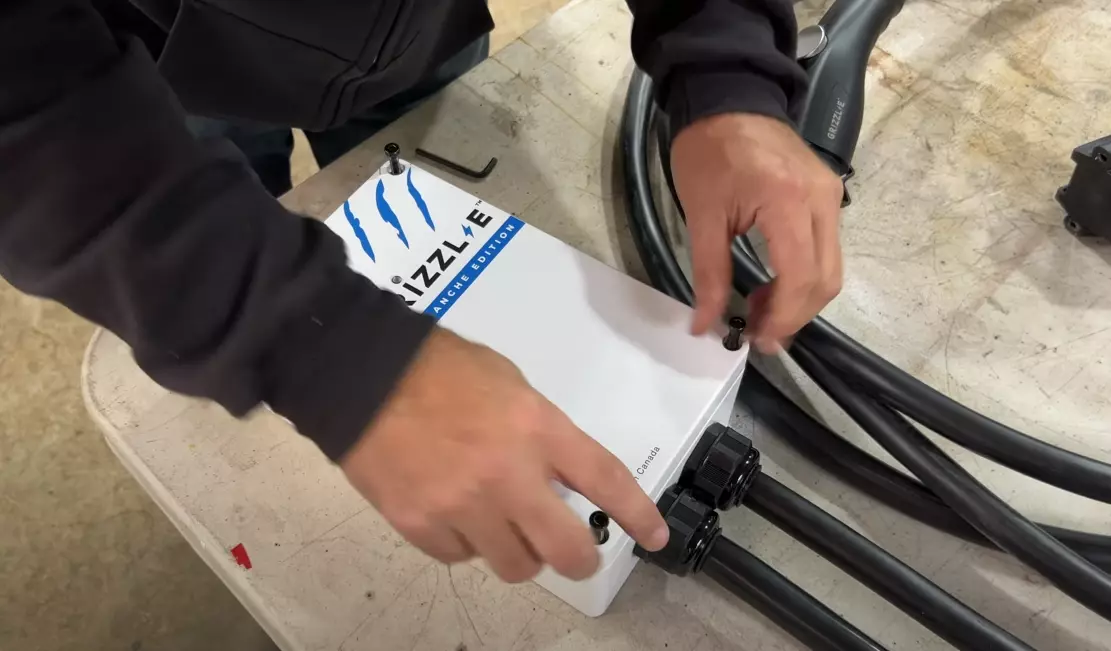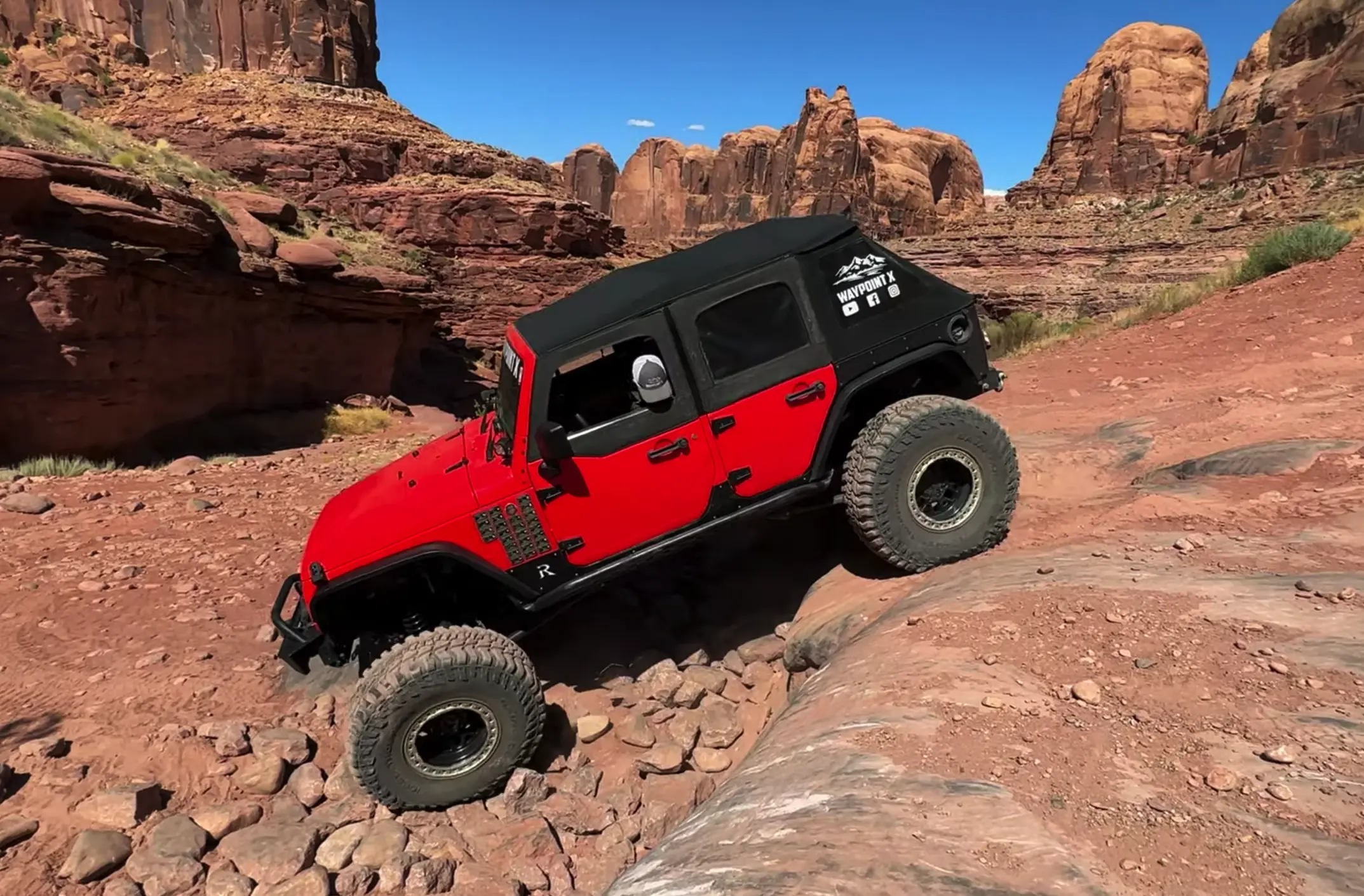
Do bigger tires affect MPG? This is a question that is frequently asked by Jeepers who wish to upgrade to bigger tires, especially those who are considering upgrading from their stock 33 inches tires to 35 inches for improved ground clearance.
Our Jeep Wrangler is always on 33 inches tires, on our recent visit to Death Valley we upgraded the tires to 35 inches to increase the ground clearance by 1 inch to handle the sandy Death Valley desert roads, we were ready for the impact on performance, and fuel efficiency.
We thought it’s a good idea to document the tour experience and the differences in fuel economy between the 33 inches tires and 35 inches tires, to help our readers with our experiment, especially Jeepers who are looking forward to upgrading from 33 inches to 35 inches so that they can make an informed decision when it comes to upgrading their Jeep tires from 33 to 35 inches.
| Tire Size | Overall Diameter (inches) | Section Width (inches) | Weight (lbs) |
| 33 inches | 32.5 – 33.5 | 10.5 – 12.5 | 55 – 85 |
| 35 inches | 34.5 – 35.5 | 10.5 – 14.5 | 65 – 105 |
If you are curious about the Impact of 33 vs 35 inches tires on MPG, Keep reading!
Do Bigger Tires Affect MPG?
Yes, we experienced a 2 MPG difference on the highway and a 1 MPG difference on off-roads after switching from 33-inch tires to 35 inches tires.
The difference in MPG can be attributed to the larger 35 inches tires having a larger diameter, weight, and circumference that added the road-holding weight on our Jeep affecting the fuel economy of our Jeep affecting our Jeeps fuel economy, performance both on-road and off-road, gearing, drivetrain components, and also aerodynamics.
Do wider tires affect fuel economy?
Yes, for a narrower 33 inches tire (10.5 – 12.5 inches), the fuel consumption is lower than the wide 35 inches tire (10.5 – 14.5 inches), also aerodynamics on bigger tires does affect fuel consumption as it can increase or decrease the amount of drag the vehicle experiences, which can impact fuel efficiency.
| Tire Size | Approximate Width (inches) |
| 33 inches | 12.5 – 13.5 |
| 35 inches | 12.5 – 14.5 |
On the highway traveling at speeds of 50km/h bigger tires, experience increased aerodynamic resistance which increased our Jeep’s MPG by up to 2 MPG compared to 33 inches tires.
35 inches tires have multiple plies, aggressive treads, and deeper lugs that affect how air flows around the tire compared to 33 inches tires, ultimately affecting our Jeep’s fuel efficiency. We also noticed our Jeep engine was working harder with 35 inches compared to 35 inches because the multiple plies in the tires made the tire stiffer affecting its ability to conform to the road surface creating more friction and resistance.
Off-road on the other hand, we experienced a lower increase in our fuel economy at 1 MPG compared to on-road at 2 MPG, although we were driving at slow speeds in the desert, there is still aerodynamic issues experienced on our 35 inches tires, to fit 35 inches tires we used our Jeep with 2.5 inches suspension system for 35 inches tires, both the tires and the lift kit made our center of gravity to be higher, combined with the poor design of the Jeep box design we experienced handling, stability issues and also crosswinds that affected our fuel economy.
Also, since we were off-roading at slow speeds, we experience maneuverability issues with bigger 35 inches tires which were difficult to maneuver in tight spaces and around obstacles, we also had to shift more frequently to maintain appropriate speeds which results to increase fuel consumption.
How does tire tread affect fuel economy?
According to our experiment, we can also conclude that the tire treads attributed to the impact on the fuel economy due to their effects on the rolling resistance.
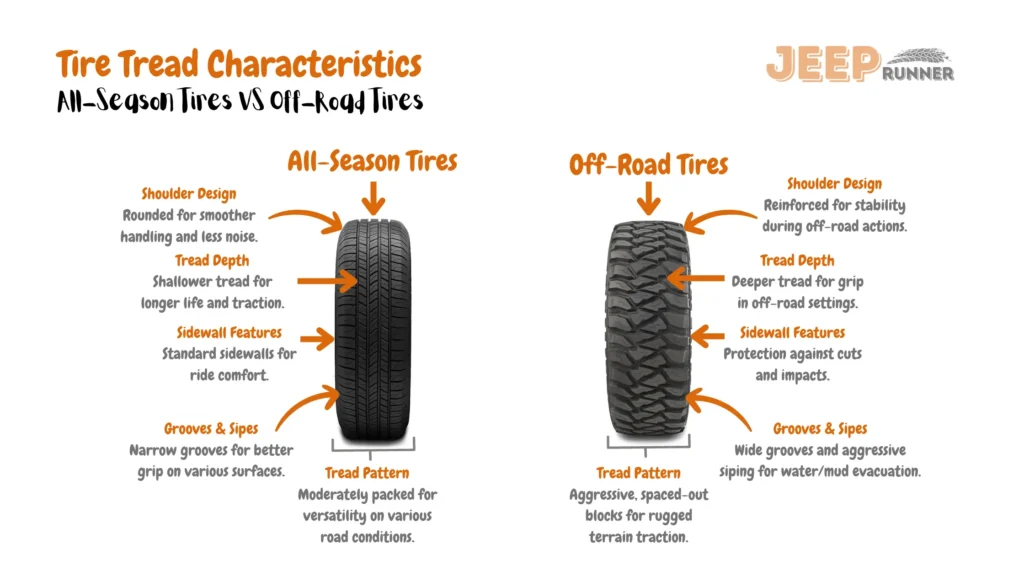
The bigger the tires are the more aggressive the tread pattern and deep lugs the tires will have, and this causes a rolling resistance that requires more energy to overcome it, according to Michelin 30% increase in rolling resistance will result in 3 to 5% of fuel overconsumption.
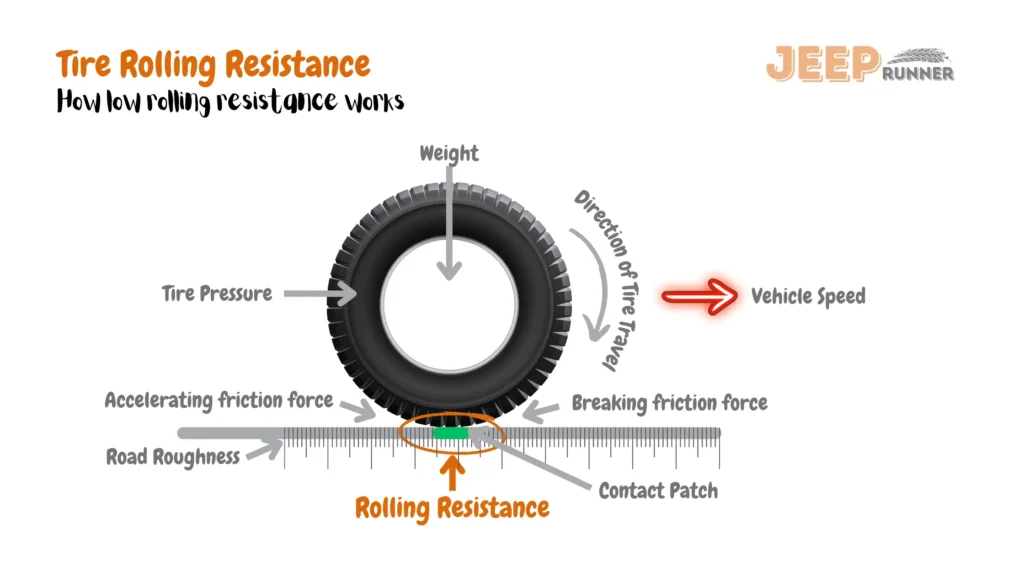
This means that any Jeep such as a Jeep Patriot on bigger tires will have more aggressive patterns compared to a Jeep Patriot on smaller tires, several effects such as rolling resistance, tire pressure, treads, diameter, and the materials of the tires will impact fuel economy than smaller tires with less of the above factors.
How much does tire weight affect fuel economy?
Our Jeep with bigger tires of 35 inches experienced a 1-2 MPG increase compared to 33 inches tires, we can also consider the weight of the bigger 35 inches tires at (65-105lbs) having a moderate to significant impact on the fuel economy compared to the 55-85 lbs. of the 33 inches tires.

| Tire Size | Weight (lbs.) | Estimated Fuel Economy Impact |
| 33 inches | 55 – 85 | Minimal to Moderate |
| 35 inches | 65 – 105 | Moderate to Significant |
35 inches tires have 65 to 105 lbs. weight which can add additional weight to your Jeep and cause the engine to work harder, reducing fuel efficiency compared to the 55 to 85 lbs. of the 33 inches tires.
Do smaller wheels go faster than bigger wheels?
Yes, smaller wheels go faster than bigger wheels, bigger wheels add weight and decrease acceleration in your vehicle, but it will result in higher top speeds with longer acceleration time. Provided the wheels are turning at the same RPM, smaller wheels will go faster than bigger wheels, and you will also put more effort into turning a bigger wheel.
When installing 35 inches tires, you might need to upgrade to a bigger set of wheels, both the wheels and tires size increase will results in more aerodynamic drag due to the weight and an increase in airflow obstruction compared to smaller 33 inches tires due to the surface area, on our experiment on our way to death valley the aerodynamic drag was more significant on higher speeds on the highway, where the resistance to motion and aerodynamic drag was more pronounced compared to reduced speeds on the desert.
After upgrading to 35 inches tires from 33 inches stock tires, we noticed that our speedometer was off by 2-4% causing us to dig more, by asking from the Jeeping community who reported that they recalibrate their speedometer after upgrading to bigger tires, the table below summarized the research of how much you will need to recalibrate your tires after upgrading to bigger tires:
| Tire Size Change | Approximate % Difference in Speedometer Reading |
| 1 inch | 2-4% |
| 2 inches | 4-8% |
| 3 inches | 6-12% |
| 4 inches | 8-16% |
| 5 inches | 10-20% |
The same effects were also recorded on wheels sizes, when changing the rims to accommodate bigger 35 inches tires, the diameter of the tire changes, which affects the speedometer, and you have to adjust your speedometer assuming the same tire is used, most Jeepers reported the following differences:
| Rim Size Change | Approximate % Difference in Speedometer Reading |
| +1 inch | 1-2% |
| +2 inches | 2-4% |
| +3 inches | 3-6% |
| +4 inches | 4-8% |
| +5 inches | 5-10% |
How much do wheels and tires affect mpg?
Our experiment was at par with the consumer reports experiment where they explained that switching to bigger tires on a Jeep Wrangler reduced the efficiency of fuel by 1-2 MPG, we also found another report by the University of Michigan reporting a similar increase in tire sizes causes a decrease in fuel economy. Both reports reported that the engine fought to maintain the speeds due to an increase in rotating mass and overall weight of the larger tires.
Gear ratio effects on fuel economy
Let’s talk about gear ratios effects on fuel economy considering that you will need to regear your vehicle to fit bigger tires, it’s known that upgrading to larger tires will affect the gearing of your vehicle, causing the engine to work hard to maintain the same speeds leading to reduced fuel economy.
In the table below, we have highlighted the gear ratios required for 33-inch tires and 35 inches tires.
| Jeep Wrangler Model | Tire Size | Gear Ratio for 33″ Tires | Gear Ratio for 35″ Tires |
| JK (2007-2018) | 33″ | 3.21 | 4.10 |
| JK (2007-2018) | 35″ | 3.73 | 4.56 |
| JL (2018-2022) | 33″ | 3.45 | 4.10 |
| JL (2018-2022) | 35″ | 4.10 | 4.56 |
Now that you know the required gear ratios, it’s time we talk about the effects of gear ratios on your vehicle’s fuel economy, according to Car Pro USA Jerry Reynolds the lower your gear ratio the better your vehicle will be in terms of its fuel economy, a big gear ratio will increase your vehicles ability to tow and performance power but your fuel economy will suffer.
From the table above 3.21 gear ratio will have better fuel economy compared to 4.10, but a vehicle with a 4.10 gear ratio will have improved towing and performance power, while its fuel economy will drop.
Since you have to gear your vehicle to adjust and compensate for the change in diameter of 35 inches tires from 33 inches, the engine will have to work hard at bigger gear ratios to turn the wheel which will decrease the fuel efficiency.
Is there an advantage to bigger tires?
Considering you want to upgrade to bigger tires, and you have seen that there is a considerable effect on the fuel economy, is there a reason to upgrade to bigger tires?
Short Answer, yes! There are advantages of upgrading to bigger tires, upgrading to bigger tires will improve your vehicle’s performance off-road, increase your vehicle’s ground clearance, and give it a more aggressive look if that is what you are after when upgrading bigger tires.
However, you will have to be aware of the potential drawbacks we have mentioned such as decreased fuel economy, reduces acceleration, and the need for modification of suspensions, gears, brakes, and speedometer.

About the Author: James Ndungu
James Ndungu is a seasoned automotive professional with a deep passion for Jeeps. With 40 years of experience in owning, testing, and reviewing various Jeep models, James has gained extensive first-hand knowledge and expertise. He shares his insights, tips, and advice through his engaging writing, helping fellow Jeep enthusiasts navigate the exciting world of Jeeps.



